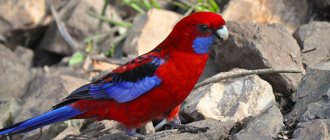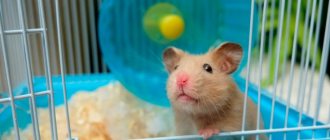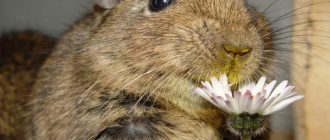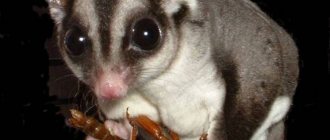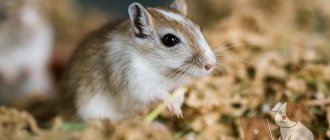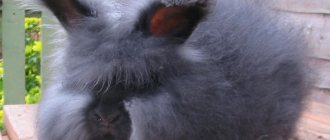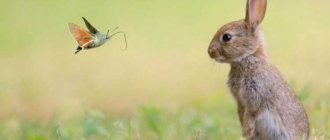Among exotic birds, the monk parrot, also known as “Quaker” or “Kalita,” is undeservedly deprived of attention. Such unusual nicknames for a parrot! Why he was called that, what he looks like, where he lives and whether he is able to keep a person company - let’s figure it out together. The feathered inhabitant of the tropics deserves to get to know him better.
Appearance and features
The length of a mature individual varies around 30 cm, and the weight is a little more than 100 grams, so the monk was classified as a medium-sized parrot. The bird, unlike the same cockatoos or macaws, has a nondescript camouflage coloring, which allows it to hide from natural enemies.
The back of the parrot is painted dark green, and the front has a gray insert. The brightest part of the animal is the tips of the flight feathers, which have a blue tint. The beak is quite strong, slightly rounded with pink, less often yellow, tissue. The iris has a dark brown tint.
It is quite difficult to distinguish a female from a male. The latter are slightly larger, and the wedge-shaped tail is slightly wider and longer. Breeders have diversified the colors of the Quaker, adding light blue and white colors. But these birds were not included in separate subspecies.
Ornithologists and professional breeders recommend looking towards the classic subspecies. Because the mutation is associated with a certain risk: decreased immunity, genetic diseases, etc.
In the photo there is a monk parrot:
Caring for Quakers
Give your birds a water bath if possible, or simply spray them with water weekly. The sprayer should be at room temperature and should not be sprayed directly into the face.
Simply spray water like natural rain. The bird's nails should be trimmed, but only by a veterinarian. Improper trimming can damage the bird, so don't try to do it yourself. Trimming feathers is an option to prevent escape. If you decide to do this, consult your veterinarian first. Seek professional advice as this procedure can be harmful to the bird if not done correctly.
Character and intellectual abilities
The bird has a friendly character and a cheerful, and sometimes even mischievous, disposition. The pet makes contact with humans without any problems and quickly adapts to new conditions. Quakers love games, are curious, and are relatively easy to learn.
It has been noted that monk parrots are prone to collecting . A bird released for a walk around the room will definitely find something interesting for itself and hide it in a secluded place. These could be buttons, jewelry, stationery, etc. In short, a Quaker is an exotic magpie.
The pet will not tolerate violation of its boundaries. If birds or other pets try to eat from a parrot's feeder or try to enter the cage, then he will immediately show aggression, defending his territory. The same applies to the owner if the bird is not yet accustomed to his hands.
Monarchs become attached to people and experience serious torment when they are alone for a long time. If the owner does not show attention to the pet, then he quickly falls into apathy, starting to get stressed.
It is also useful to read: How lovebirds live
Predisposition to disease
Living in good conditions, Quakers rarely get sick. Like other ornamental parrots, they are susceptible to common avian diseases:
- psittacosis;
- gout;
- parasitic infestations;
- mites;
- joint inflammation.
In general, the main problem with social parrots like the monk is self-plucking. As a result of the stress it experiences, the bird involuntarily begins to fiddle with its body, scratch and peck its skin, and pull out feathers. This is a serious pathology, so it is better not to let it happen. You should try to give your pet as much free time as possible. Then he will always be busy with something and ready to communicate.
A restless and noisy parrot can unsettle anyone with its undertakings. But you still have to look for such a devoted comrade as the Kalita parrot. A properly raised bird will be the best companion for many years.
Life in the wild
The Quaker's habitat is South America. The largest populations are concentrated in Argentina, Bolivia and Uruguay. Certain wild subspecies of the monarch parrot can be found in Italy, Greece and Japan. Unlike other exotic birds, the monarch parrot is not in danger of extinction.
For example, in Barcelona the bird is considered a pest, destroying crops. The current number of Quakers can be compared with the distribution of rock pigeons in Russia. Parrots live in large groups of 50-80 individuals. Urbanization has not affected the monarch population in any way, but rather the opposite. Cities have a lot of tasty and affordable food, while there are practically no predators.
Classification
The species includes 4 subspecies:
- Myiopsitta monachus monachus
(Boddaert, 1783) - southeastern Brazil, Uruguay and northeastern Argentina. Body length 30 cm, wingspan 145-160 mm. Nominative subspecies. - Myiopsitta monachus calita
(Jardine & Selby, 1830) - western and southern Argentina. Body length 27 cm, wingspan 135-145 mm. - Myiopsitta monachus cotorra
(Vieillot, 1818) - southeastern Bolivia, Paraguay, northern Argentina and southern Brazil. Body length 27 cm, wingspan 130-145 mm - Myiopsitta monachus luchsi
(Finsch, 1868) is an isolated population in Bolivia. Body length 30 cm, wingspan 145-165 mm.
Features of life at home
For a comfortable stay, the bird needs to create appropriate conditions close to natural. First of all, you should take care of the arrangement of the cage. Another critical point is nutrition.
How to choose a cage and arrange it
It is necessary to choose a cage taking into account the size of the pet.
Housing should not crowd the bird or, conversely, be too large. In the first case, the parrot will begin to experience stress due to lack of movement. Whereas a large cell will provoke him into dangerous flights.
The optimal cage dimensions for keeping one monarch parrot are 60 x 80 x 100 cm. If we are talking about a pair, then the dimensions should be increased by one and a half times.
As for the shape, it is better to avoid non-standard solutions with a large number of bends and layers. In addition to the fact that the level of injury hazard of such structures is noticeably higher, they are also much more difficult to maintain. It is more advisable to focus on the classic rectangular shape of the cell. In this case, it should be elongated in a horizontal plane, not vertical.
It is also worth paying attention to the material used. The most reliable options are powder-coated stainless steel. They are durable, non-toxic and easy to maintain. But they are noticeably more expensive than the same tree. A wooden frame with galvanized rods is a universal solution for all birds, including Quakers. But the material must be processed accordingly.
Popular manufacturers of cages for medium-sized parrots:
- Marchioro;
- Savic;
- IMAC;
- Homezoo;
- Triol.
Wood absorbs moisture, which causes the development of pathogenic bacteria. Moreover, monk parrots have a strong beak that can bite through a wooden frame. Therefore, such solutions quickly become unusable.
It is better to avoid plastic and other synthetics. Parrots love to taste everything, and contact with chemicals will negatively affect the health of the pet. This is especially true in the warm season, when under the influence of high temperatures plastic begins to melt, emitting toxic fumes.
A retractable tray will make servicing the cage much easier. If the latter is present, the bird will not experience stress from human hands flickering around its home. More advanced options are equipped with a pair of trays, which makes cleaning much easier.
You should also take care of accessories. The cage must have:
- feeder;
- drinking bowl;
- swimsuit;
- perches;
- toys.
Quakers love to splash in the water, so having a swimsuit is mandatory, but with some restrictions. The accessory must match the size of the bird. If the bathing suit is too large, the pet may choke, especially if the temperature of the water in the container is below room temperature. Therefore, solutions for large animals (cockatoos, macaws, etc.) are not suitable. Bathing suits that are too small (for budgies) will be useless, because the bird will not be able to fully serve itself.
Perches are also necessary. It is more practical to look towards wooden perches of irregular shape or concrete solutions. The former will contribute to the proper development of the paws, and the latter will help the pet to grind down its beak and claws.
If the parrot lives alone, then toys are necessary in any case. They will at least partially brighten up the pangs of loneliness.
Common playing accessories for birds:
- mirror;
- ladder;
- vertical guides;
- balls;
- trolleys;
- bells.
On sale you can find special play areas for parrots. They are installed next to the cage. The filling is variable and depends on the wishes of the owner.
Catering
Nutrition must be balanced. You cannot feed your pet dry food alone, otherwise he will develop gastritis and other related problems.
A balanced diet includes:
- grains;
- fruits, vegetables, berries;
- porridge;
- greenery;
- branch food
The lack of vitamins and minerals immediately affects the appearance of the pet: the plumage loses its former luster, appetite decreases and the color of the beak and paws changes. Dry food is a base that should be available in any case. If we are talking about young animals, then the grains can be sprouted, thereby enriching the diet with vitamins.
Popular brands of dry food:
- "Padovan";
- Versele-Laga;
- "RIO".
Fruits and vegetables must be included in the diet, regardless of the composition of the dry food. Even if the bird refuses to accept such treats, it must be convinced otherwise. One of the most effective methods is finely and beautifully chopped products.
Fruits, vegetables and berries that are healthy for parrots:
- apple;
- apricot;
- pumpkin;
- pear;
- peach;
- cucumber;
- watermelon;
- cherries;
- zucchini;
- mandarin;
- banana.
Parrots should not be given persimmons, avocados, mangoes and potatoes in any form. Also, you should not salt or sweeten your food. Fruit peels should be peeled if they were purchased at the store.
Porridges are especially useful for young and weakened animals. You can combine them and add fruits and vegetables. As for viscosity, it all depends on the preferences of the pet.
Healthy cereals:
- barley;
- buckwheat;
- oatmeal;
- millet.
It is also necessary to ensure that the bird always has access to liquid. It is better to refuse boiled water, because it is devoid of minerals. It is more advisable to use a filter or buy distilled solutions.
Branch food can be found in any forest plantation. But it should be as far from the roads as possible. In winter, before serving, the branches should be placed in warm water until the buds appear. Everything that was brought from the street must be disinfected: pour boiling water over it or use specialized products.
Parrot monk (kalita)
This bird comes from Argentina. There its name sounds like “Quaker parrot.” This has nothing to do with frogs, everything is much more intelligent. The religious order of Quaker monks, which existed a couple of centuries ago, had its own uniform. The color of parrots is very similar to it - hence the name.
Even with a casual glance you can notice that the bird’s plumage is contrasting:
- the crown of the head, back, upper wing and tail feathers are bright green,
- chest and neck pale gray
Photo of a monk parrot The Quakers did not leave a trace in our history, which is why we also call these birds “Kalita”. The monk parrot is of average size and weight. Its body length is approximately 30 cm, and its weight is 100-150 g. It is extremely difficult to distinguish a female from a male by appearance; the most experienced ornithologists can do this, and even then only if they observe the whole flock. And these birds do not have many subspecies. But there is one point on which parrots are still divided into two types - the presence of blue feathers on the body:
- The green monk is a classic parrot. His only wings are not green, but blue or brown.
- The blue monk parrot is an artificially bred species. All of its plumage on the top of its head, back, and wings is heavenly in color.
Reproduction in the wild and at home
In the parrot family, the Quaker is the only species that builds permanent nests. That is, the parrot does not live in hollows and rock crevices like other parrots. The nest can be located either on a tree or on poles, roofs and other suitable places.
In the natural habitat, housing is built according to the principle of a colony. That is, one big house for everyone, but with separate exits for each couple. Such colonies often attract other birds: teal, pygmy falcons and other small birds.
In the wild, parrots quickly find a mate, while in captivity everything is more difficult . If the pet was raised alone, got used to the owner, and then a partner was placed with him, then the couple may not work out. If the individuals are not tamed, then there should be no problems with breeding.
The female lays one egg per day: up to 8 eggs in captivity and up to 4 in the wild. The incubation period lasts about 4 weeks. With rare exceptions, the male joins in the incubation process.
In the photo there is a chick of a monk parrot:
When living in a colony, the role of nanny can be taken on by any member of the group; as a rule, this is the youngest individual from last year’s brood. In captivity, all rearing responsibilities fall on the shoulders of the female.
It is also useful to read: Rosella parrot
Nesting
Under natural conditions, birds most often form their nests in a hollow tree or in a burrow. Quaker parrots are different from other birds. They build entire nests from large branches on tall trees. The female arranges the part inside, and the male lines the walls. A strong nest can last for many years. Birds breed twice a year. The home can be much larger. It resembles a haystack and reaches three meters. In one large dwelling there are several separate nests in which other families live. The bird family has a private place to lay eggs. Some parrots live separately from everyone else and build a nest only for themselves.
Quakers are able to make nests anywhere: on a bridge, on a power line. This causes inconvenience to people, so during nesting it is necessary to provide the birds with a large number of branches of different sizes. This species of parrot breeds better in groups. The average number of eggs laid by a female is 6–7. She hatches them for one month.
After hatching, the chicks live in the home for 1–2 months, then leave the parental home. Over time, the nest is used as a place to rest after long flights. During nesting, parrots fly away in search of food. Some of them remain to monitor the home and the cubs. When danger arises, the bird communicates this to other brothers by screaming.
Owner reviews
Owners generally respond positively to monk parrots. The bird delights with its friendliness, intelligence and charm. The pet easily distinguishes family members and can even learn the name of each one, calling him to him for games.
Pros of Kalita-monk:
- quick adaptation to a new place of residence;
- sociability;
- the ability to remember up to 40 words and use them logically;
- goodwill towards household members and other pets (if they do not violate his territory);
- not picky about maintenance and care.
Minuses:
- hoarse and loud voice;
- requires increased attention from the owner;
- a lot of feathers and fluff.
If there are small children or elderly people in the house who need periodic rest, then you should not have a noisy bird called Kalita. This active and vocal bird rises with the first rays of the sun, and at the same time raises its owners.
Nutrition
The Quaker menu is quite unpretentious: grains, seeds, berries, fruits, insects, grubs, flowers and buds.
In captivity, feeding monk parrots with grain food alone is strictly prohibited! Birds may become obese and suffer from severe liver disease.
The diet must include berries, fruits, vegetables, herbs and sprouts.
Photo: Glenn
Also, this type of parrot is prone to self-plucking and self-mutilation. Therefore, it is very important to purchase poultry from trusted places. Her psychological state is as important as her physical health.
Monk parrots know how to be the best friend to their owners and a member of the entire family. If a loud voice and love to chew on everything that comes to hand don’t stop you, then you can become the proud owner of a Quaker.
Habits of monk parrots
Monk parrots are friendly and sociable. Birds are able to speak and repeat the sounds they hear. They can remember several dozen words and phrases. Birds identify each family member well. They have a high level of onomatopoeia. They live calmly with other pets. Parrots are unpretentious in food and do not require special care. After getting acquainted with a new house, they quickly become attached to it, so when walking around the apartment they always return to their place. A significant disadvantage of this type is the harshness and hoarseness of the voice.
Birds need to be given a lot of attention to avoid depression. If there is not enough time for this, it is recommended to buy a friend for the parrot so that the pet does not suffer alone. First we need to start the process of getting to know them, they must get used to each other. After this, it will be possible to move another bird into the cage. Birds quickly adapt and do not show aggression.
General health problems
The most common health problem in Quaker parrots is obesity, which can lead to fatty liver and nutritional deficiencies causing feather plucking.
In most cases, you can avoid feather plucking if the birds get enough exercise and interaction with you. Self-mutilation is a common but unhealthy way that parrots cope with boredom and anxiety. Quakers are relatively easy to rehabilitate compared to other parrots.
Fatty liver disease is most often caused by eating high-fat foods, namely a seed-based diet. A well-balanced and varied diet can help your bird stay healthy.
Breeding
Many breeders specifically breed parrots of this particular species. Birds willingly give birth to offspring in captivity, and usually live longer than in the wild - up to 30-40 years versus 15 without human attention. Another peculiarity is that wild monk parrots are green-gray in color, and breeders have managed to obtain many interesting colors. There are blue, orange, red-yellow and multi-colored parrots.
It is recommended to purchase chicks from nurseries where it is well known who their parents were and that the birds are healthy. Breeders offer a certificate of the parrot's breed, as well as a personal “passport” with vaccinations against major diseases. You should not buy a chick or an adult parrot at the market, since they most likely offer illegally smuggled wild specimens; they become much less accustomed to humans, are often affected by parasites and are simply sick or weak.
